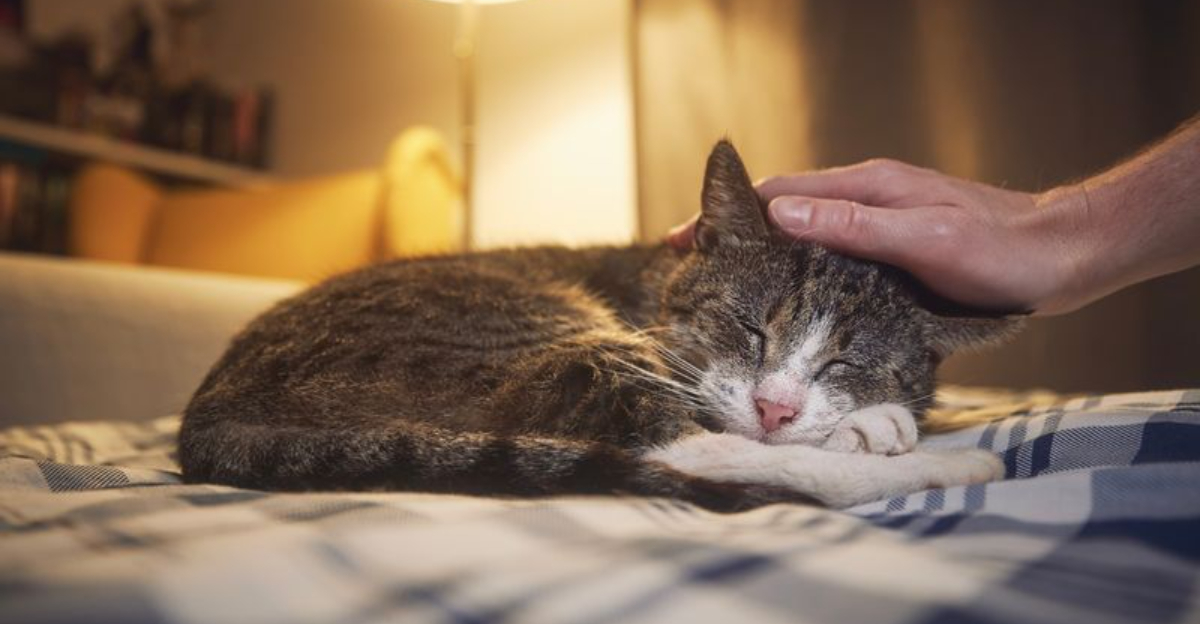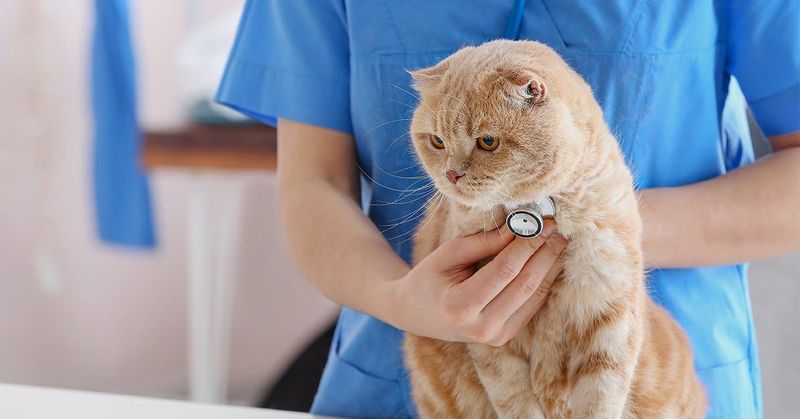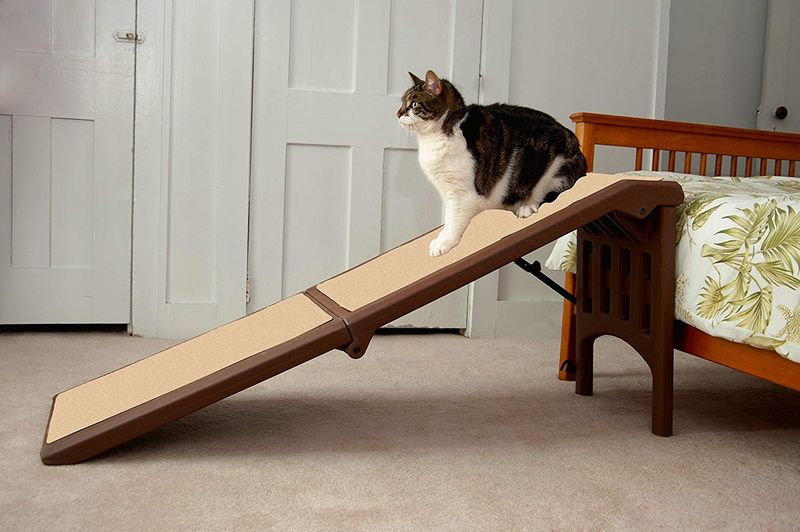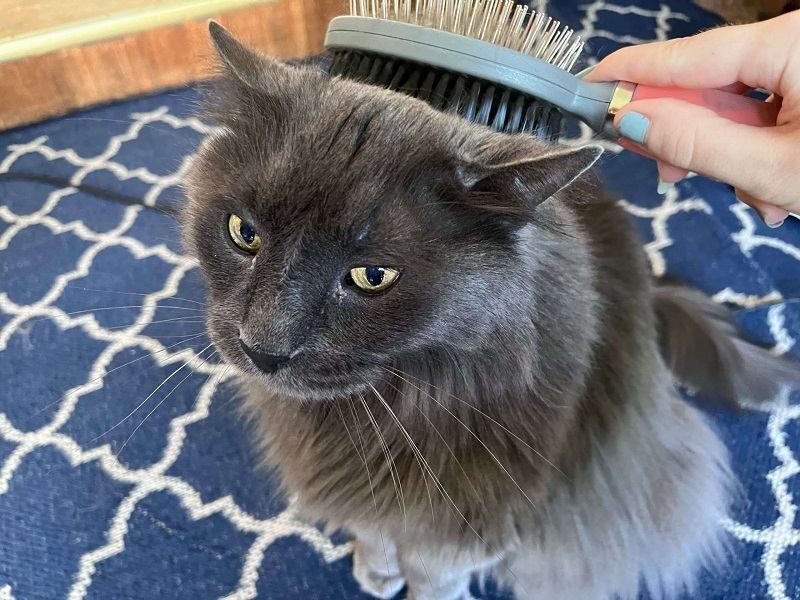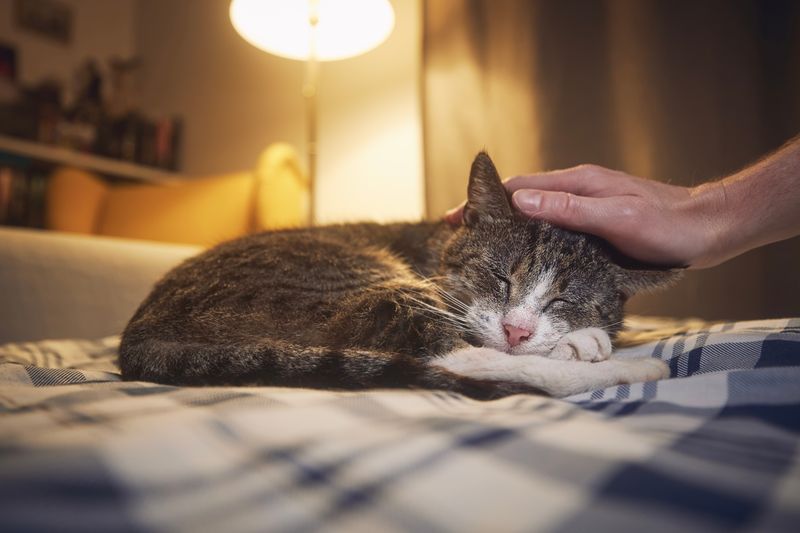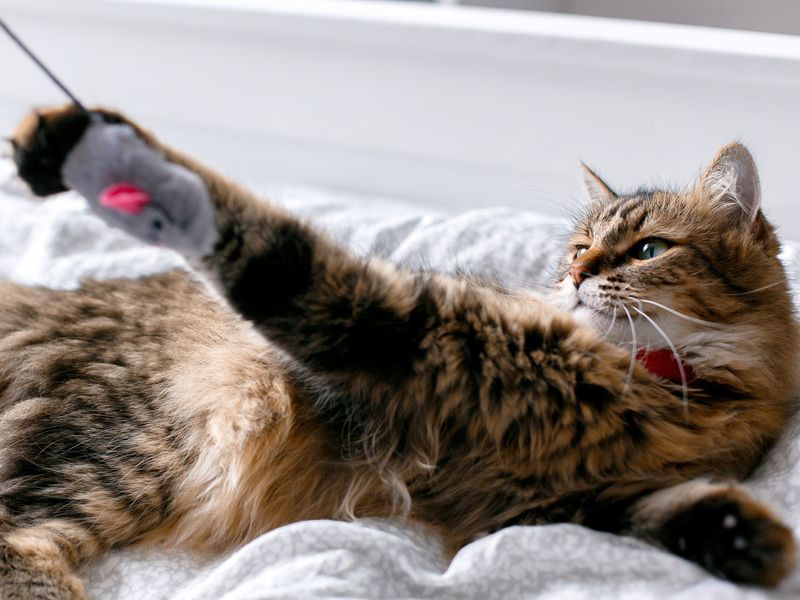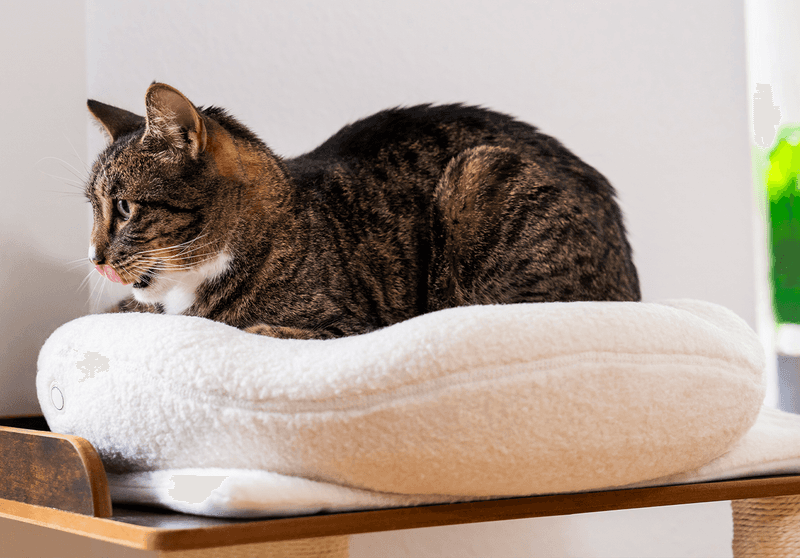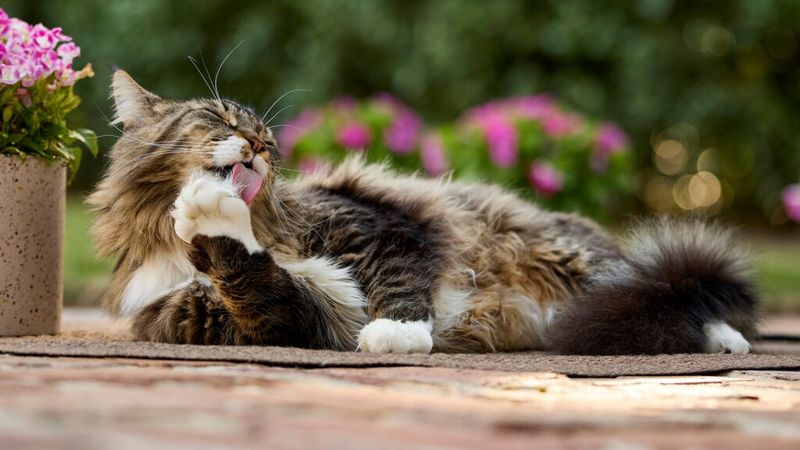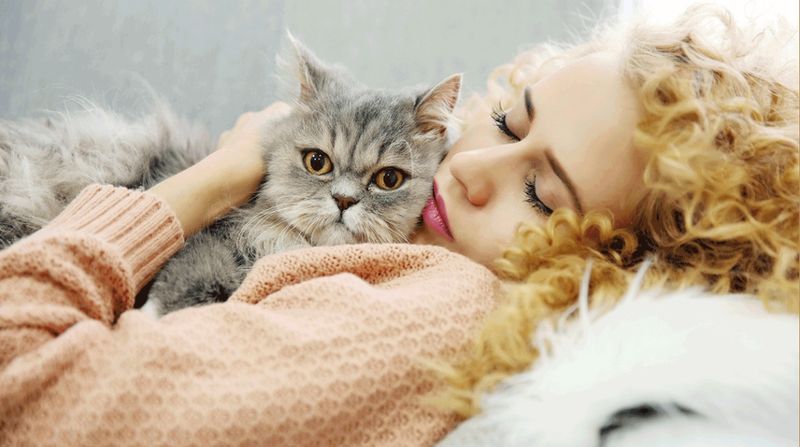📖 Table of Content:
- 1. Regular Veterinary Check-ups
- 2. Adjusted Nutrition Plan
- 3. Easier Access to Necessities
- 4. Gentle Grooming Sessions
- 5. Consistent Daily Routine
- 6. Modified Play Sessions
- 7. Comfortable Resting Spaces
- 8. Stress Reduction Strategies
- 9. Water Accessibility Improvements
- 10. Extra Monitoring for Health Changes
- 11. Quality Time and Affection
Cats typically enter their senior stage around the age of 11, marking the beginning of a slower, more delicate phase of life. Their energy levels may decrease, and physical changes often appear gradually. What once worked for a younger cat may no longer meet their evolving needs.
Aging cats can develop joint stiffness, dental issues, or changes in appetite and sleep patterns. These shifts call for thoughtful adjustments in diet, environment, and daily care. Small changes can make a big difference in maintaining their comfort and well-being.
With the right support, senior cats can continue to thrive and enjoy a peaceful, contented life. Paying attention to their behavior and health helps identify what they need most. The golden years, when handled with care, can be filled with quiet companionship and deepened trust.
1. Regular Veterinary Check-ups
Twice-yearly vet visits become crucial for aging cats. Senior felines hide illness remarkably well, making professional examinations essential for catching problems early.
Your veterinarian can spot subtle changes that might escape even the most attentive pet parent. Blood work, dental checks, and blood pressure monitoring help identify common senior cat conditions before they become serious.
Many age-related issues respond well to early intervention, potentially adding years to your cat’s life. Consider finding a veterinarian who specializes in geriatric feline medicine for the most comprehensive care.
2. Adjusted Nutrition Plan
Senior cats’ metabolism slows dramatically, requiring specially formulated diets. These foods contain modified protein levels, additional antioxidants, and omega fatty acids to support aging bodies and brains.
Talk with your veterinarian about transitioning to a senior-specific formula around age 11. Some older cats develop kidney issues requiring prescription diets with controlled phosphorus and protein levels.
Warming food slightly enhances aroma, enticing cats with diminished senses of smell. Small, frequent meals often work better than large portions, especially if your senior friend has dental discomfort or digestive sensitivity.
3. Easier Access to Necessities
Arthritis affects up to 90% of cats over 12 years old, making jumping and climbing painful. Rearranging your home helps your aging companion maintain independence despite physical limitations.
Place food bowls, water dishes, and litter boxes on each level of your home. Consider shallow-sided litter boxes with ramps for easier entry. Sturdy steps or ramps to favorite perches allow your cat to reach beloved spots without painful jumps.
Heated beds provide tremendous relief for achy joints, especially during colder months. Strategic placement of these comfort items minimizes the distance your senior needs to travel between essential resources.
4. Gentle Grooming Sessions
Many senior cats struggle with self-grooming as joints stiffen and flexibility decreases. Matted fur develops quickly, especially in long-haired breeds, causing skin problems and discomfort.
Short, gentle grooming sessions using soft brushes help maintain coat health while strengthening your bond. Pay special attention to areas your cat can no longer reach easily – lower back, hindquarters, and behind the ears.
Dental care becomes particularly important as gum disease affects most senior cats. Introduce toothbrushing gradually if possible, or ask your vet about dental treats, gels, or professional cleanings to keep your cat’s mouth healthy and pain-free.
5. Consistent Daily Routine
Predictability plays an essential role in the emotional stability of aging cats. Alterations in routine may heighten stress responses, particularly in individuals exhibiting signs of cognitive dysfunction.
Feed, play, and cuddle at consistent times each day. When schedule changes are unavoidable, maintain as many familiar elements as possible. Cats with feline cognitive dysfunction (similar to dementia) particularly benefit from structured days with minimal surprises.
Routine also helps you notice subtle changes in behavior that might indicate health problems. When you know exactly what’s normal for your cat, you’ll quickly spot when something seems off – allowing for prompt veterinary attention.
6. Modified Play Sessions
Physical activity remains essential for aging cats, helping maintain muscle mass and mental sharpness. The key is adapting play to accommodate limited mobility and reduced energy levels.
Short, gentle play sessions several times daily work better than lengthy romps. Try puzzle feeders that challenge your cat’s mind without demanding physical exertion. Wand toys moved slowly along the ground encourage gentle pouncing without requiring jumps.
Watch for signs of fatigue or discomfort during play. Heavy breathing, limping, or withdrawal signals it’s time to stop. Remember that mental stimulation counts too – new scents, bird videos, or simply moving your cat’s bed near a window provides enrichment without physical strain.
7. Comfortable Resting Spaces
In their later years, cats become true connoisseurs of comfort, often snoozing away most of the day. Their aging bodies crave not just softness, but thoughtful support. An orthopedic bed, sculpted from memory foam, offers the kind of restful luxury a wise old feline deserves.
Strategic placement matters too. Offer resting spots in quiet, draft-free areas away from household traffic. Include options in sunny locations where your cat can soak up warmth during the day. Heated beds or pads set on low settings provide therapeutic comfort, especially for cats with arthritis.
Multiple bed options throughout your home ensure your senior friend never needs to travel far for rest. Beds with low sides accommodate limited mobility while still providing the security and enclosure cats naturally prefer.
8. Stress Reduction Strategies
Aging reduces a cat’s tolerance for environmental disruptions, heightening sensitivity to stress. Loud sounds, unfamiliar animals, or alterations in living space can cause anxiety in senior cats. Stability and routine play a crucial role in maintaining emotional well-being at this stage.
Create quiet sanctuary spaces where your cat can retreat when feeling overwhelmed. Pheromone diffusers like Feliway help create a sense of calm. When visitors come, ensure your senior has access to a quiet room away from the commotion.
Minimize major household changes whenever possible. If changes are necessary, introduce them gradually while maintaining your cat’s core territory – their feeding station, favorite resting spots, and litter box areas – as consistently and accessibly as possible.
9. Water Accessibility Improvements
Kidney function commonly declines in older cats, making hydration critically important. Many seniors develop subtle dehydration because water sources are inaccessible or unappealing.
Place multiple water stations throughout your home so your cat never needs to journey far for a drink. Cat fountains often encourage increased water consumption through movement and filtration. Some seniors prefer wide, shallow dishes that don’t press against sensitive whiskers.
Adding a small amount of water to wet food provides stealth hydration for reluctant drinkers. Ice cubes made from low-sodium chicken broth can entice playful drinking. Monitor water intake closely – decreased consumption often signals developing health problems requiring veterinary attention.
10. Extra Monitoring for Health Changes
Subtle shifts in behavior often provide the earliest warning signs of health problems in senior cats. Weight changes, altered litter box habits, or differences in vocalization patterns warrant attention.
Keep a simple journal tracking your cat’s appetite, activity level, and elimination habits. This information proves invaluable during veterinary visits. Watch especially for increased thirst, weight loss, difficulty jumping, changes in pupil size, or disorientation – all potential indicators of common senior cat conditions.
Digital pet scales allow for weekly weight checks at home, helping catch concerning trends early. Remember that behavioral changes like increased vocalization, confusion, or altered sleep patterns aren’t simply “old age” but often indicate treatable medical conditions requiring veterinary care.
11. Quality Time and Affection
Beyond physical needs, senior cats crave emotional connection more than ever. Many older felines become increasingly affectionate, seeking comfort and reassurance from their favorite humans.
Gentle lap time, quiet conversation, and predictable interaction provide security during a life stage filled with physical changes. Even independent cats often welcome more contact as they age. Touch releases endorphins that help manage pain and anxiety naturally.
Schedule dedicated daily bonding sessions when your cat receives your undivided attention. This consistent connection helps you notice subtle changes while providing emotional support. For cats experiencing sensory decline, your familiar voice and touch become increasingly important anchors in their changing world.
